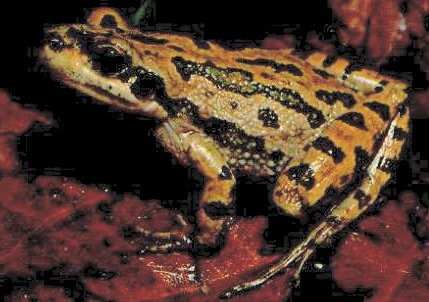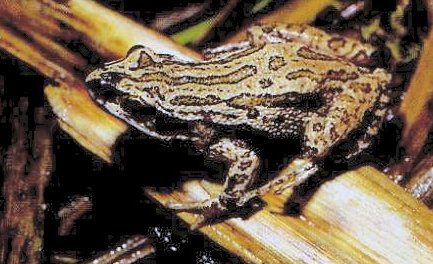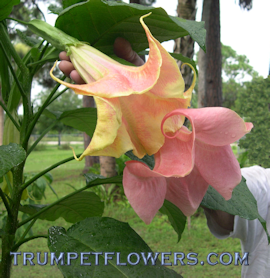Caresheet for Pseudacris triseriata, also called the boreal chorus frog
 subfamily: Hylinae
subfamily: Hylinae
Male chorus frogs are between 0.8 inches long, and females are anywehere between 1.2 and 1.5 inches from snout to vent. The skin on the dorsum is slightly tubercular, and on the venter it is granular, which is typical of many frogs. The snout is acutely rounded. The toes are only about one-third webbed. The dorsusm is a grayish tan, with brown mid-dorsal and dorsolateral stripes or rows of spots. There is a broad dark brown to black colored stripe from the snout through the eye and the ear (tympanum) to the groin. The venter is white.
They are found throughout Eastern North America. Alberta to New York, the northern Appalachians, and the southern coast south to Georgia, and west to Arizona. They habitate grasslands, pastures, croplands, moist forest areas, and swamplands in the southern part of their range.
Boreal Chorus frogs are terrestrial in nature, and also nocturnal.
Western chorus frogs thrive on a diet made up of small arthropods such as sowbugs, and also earth∼worms, beetles, grubs, ants, crickets, and even spiders.
When kept in captivity, refrain from feeding spiders!

Breeding times vary. In the southern ranges, they will breed throughout the year. In the cooler climates, they tend to breed in late winter and very early spring. The males will call from reeds and grasses at the water's edge. Water sources may be a pond or vernal pools, marshes, roadside ditches and large, deep puddles. Like their cousins the springpeepers, they can be seen and heard even before all of the ice has melted away from winter. At the slightest movement, they will dissappear into the icy waters they sit next to.
The male's call consists of of a vibrant, pulsed 'creeeek.' it is a raspy, rising trill of a sound, lasting one to two seconds. The females will deposit 100 up to 1500 eggs in small clutches of 5 to 300 eggs attached to the vegetation in shallow water. The eggs require about 2 weeks to hatch into small, free swimming tadpoles. They will metamorph in approximately 2 months into tiny frogs.
Since Chorus frogs are terrestrial, they require a longer than taller habitat in captivity. A vivarium that is 18 x 18 inches (and larger). A height of 1 foot and up is necessary for the tank plantings. Be sure to place several of the plants close enough together to create a good hiding place for your frog(s).
Give the frog a glass or plastic bowl of water that is large enough for him to soak his entire body in, but not so deep that he can't easily climb out of. Remember, they are terrestrial, so too deep and the frog could actually drown!
 Keep the temperature of the vivarium comfortable, but not too hot. This frog naturally comes from a temperate climate, hibernating in winter digging into moist soil alongside the banks of water-ways. This makes him used to mild weather. usually, the temperature of your home will also be right for this species.
Keep the temperature of the vivarium comfortable, but not too hot. This frog naturally comes from a temperate climate, hibernating in winter digging into moist soil alongside the banks of water-ways. This makes him used to mild weather. usually, the temperature of your home will also be right for this species.
Make sure to use a secure, vented lid on the top of the vivarium. If you live in a temperate zone yourself, and use heating in winter, make sure to partially cover up to 1/2 of the lid in winters to help hold in humidity. Your frog will not hibernate in winters(it will be too warm in the house to trigger this) and will need humidity that the heating unit in your house may 'sap' out of his home without the cover. A measured-cut sheet of acrylic or glass will do. If humidity in the room the frog is in goes below 40 percent, use a humidifier filled with ONLY water in the room to raise it up to a level between 45 and 50 percent.
Once a month carefully locate the frog(s) inside the tank, then gently place a glass container over them. This will allow you to thoroughly clean the entire tank without having to remove them. Spray Quat antifungal throughout now. Remove any dying moss or other plants and replace. If you have used a sponge filter, then instead of daily water changes, you can change 1/2 the water every few days, scrubbing the pool with clean brush to remove scum. Replace water with treated water only.
Because this frog is a psedacris, you can find more help reading the Pseudacris crucifer caresheet.
Springtails, crickets, earthworms, fat flies, termites, fly maggots, and grubs make a good staple diet for adults. Read the Pseudacris crucifer caresheet food entry at page bottom for feeding the tiny newly morphed frogs.
Do not handle this anuran unless absolutely necessary, and then use Proper procedures.
Further Onsite Help
Basic Frogcare (choosing healthy frogs, species mixing, feeding, etc.)
Vivariums (to establish and maintain, lighting, substrate ideas, etc.)
vivarium disease-free, how to set up quarantine tank)
Water 101 (How to establish & maintain high quality water)
Raising Insects (Info about raising your own insects, including fruit flies)
Frog Breeding (temperate style setup information)
An excellent off∼site link to see the tadpoles and read more about the development of the Boreal chorus frog would be to visit the Home Page of Greg Sievert. After clicking, scroll down to near page bottom and click on the link to Development of Boreal Chorus Frog Embryos. The photography is as beautiful as the additional information you will read. He also has some .aiff sound files so you can hear him sing! :)
 A special 'Thanks!' goes out to Brooke from Canada for prompting me to do up this sheet
A special 'Thanks!' goes out to Brooke from Canada for prompting me to do up this sheet

